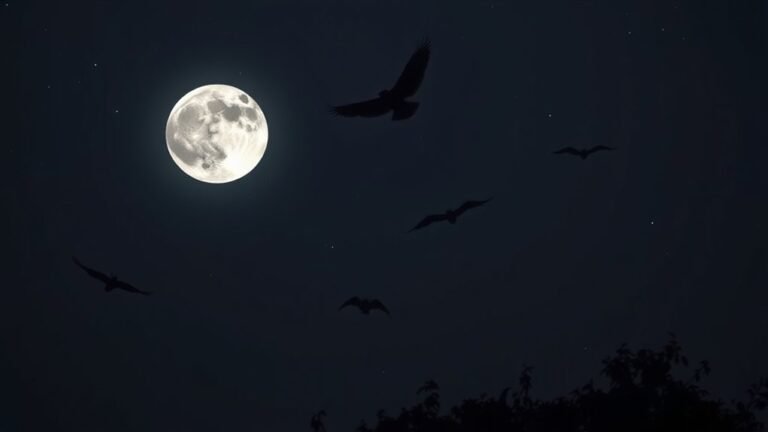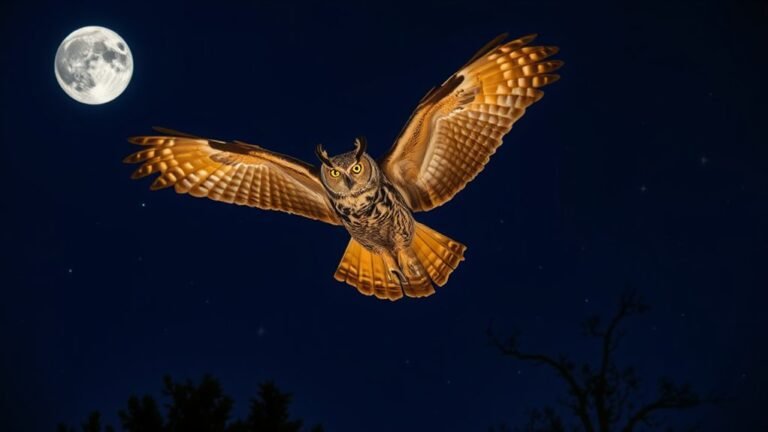How Does a Bird Learn to Fly? the Journey From Nestling to Flier
As you watch a young bird in its nest, you can see its movements and behaviors that show it is ready to learn to fly. Each time it stretches its wings or flaps them nervously, it takes a step in its growth journey. Its parents support this process, helping the bird learn. The young bird faces challenges that shape its skills and abilities. What brings all these factors together, allowing it to take its first flight?
Key Takeaways
Young birds learn to fly with help from their parents. Mothers and fathers encourage their young and show them how to practice in the nest.
Understanding their body is key. Young birds need to know how their wings and chest muscles work to fly well.
Good nutrition is important too. Insects and seeds provide the vitamins and minerals birds need for strong muscles and healthy feathers.
At first, birds' flying attempts are all about instinct. These early movements help them build muscle memory and improve their coordination as they grow.
Watching adult birds also helps. Young birds see how experienced flyers handle their wings and mimic those actions. This drives their desire to explore and eventually achieve flight.
The Life Cycle of a Bird: From Egg to Nestling
A bird's life cycle has clear stages, beginning with a small egg in the nest.
Parents provide warmth and care during incubation. This support protects the embryos and provides necessary nutrients.
After the eggs hatch, nestlings emerge and rely entirely on their parents. They express their hunger clearly, emphasizing the significance of parental care.
Parents feed their young, often by regurgitating food easily digestible for them. This nurturing helps the nestlings grow and feel secure.
Each stage, from incubation to feeding, shows the balance of life, encouraging us to appreciate this amazing transformation.
The Role of Parental Guidance in Early Development
Young birds have natural instincts, but parental guidance is vital for their growth. Adult birds teach their chicks important skills through consistent care.
Parents encourage their young to stretch their wings, practice flying, and land safely. This hands-on teaching builds the chicks' confidence and reinforces their instincts. As they copy their parents, young birds learn about space and movement, which are key for successful flying.
The bond between parents and their offspring creates a feeling of safety and connection, helping the young birds to thrive. These experiences create a strong base, preparing them to fly well and face future challenges.
Understanding Wing Anatomy: Preparing for Flight
Young birds need to understand wing anatomy to prepare for flight. Their wings have three main sections: the humerus, radius, and ulna. Each section is important for movement and strength.
As nestlings grow, developing strong muscles, especially in the chest, helps them flap their wings powerfully. The feathers serve a critical function; they provide lift and stability.
Young birds practice flapping their wings instinctively. Each flap helps them build coordination and strength. This ongoing practice is essential for learning to use their wings effectively in flight.
Exploring wing anatomy creates a connection with birds, blending science with appreciation for nature.
The Importance of Nutrition in Nestlings
Nutrition is crucial for nestlings. It directly affects their growth and ability to fly. Insects and seeds are key food sources that provide important proteins and energy.
These nutrients help nestlings develop strong muscles and feathers, which are essential for flying. You can watch parent birds choose the best food for their young. The quality of the food links closely to how well the nestlings grow into fledglings.
A balanced diet helps nestlings become healthy and eager to explore the sky. Good nutrition sets the stage for their journey into flight.
Flap, Flap, Flap: The Initial Attempts at Flight
Nestlings develop strong muscles and feathers from a healthy diet.
They're now ready for their first attempts at flight. You'll see their small, tentative wing flaps. These movements may appear random, but they're driven by instinct. Each flap helps them build muscle memory and gain confidence, even if they don't lift off right away.
You may notice them mimicking adult birds, watching how these birds soar and land. This imitation fuels their desire to explore beyond the nest.
Their excitement is clear, and as you observe, you feel connected to this important moment in their journey to flight.
Developing Coordination and Balance
As young birds begin to fly, they must learn how to balance and coordinate their movements.
These nestlings practice by hopping from branch to branch. Each jump helps them build strength and control, which are important for flying. They adjust their wing beats as the wind changes.
This training enhances their awareness of space and helps them fly confidently. Watching this process highlights nature's amazing ability to foster growth, one leap at a time.
The Transition From Ground to Air
Once nestlings learn to balance and coordinate, they face an important step: moving from the safety of the ground to the freedom of the sky. This process starts with exploring the ground. Their instincts urge them to try their wings by hopping and flapping.
You may see them on the edge of a branch, filled with excitement and some fear. This behavior is common among young birds. Each cautious move shows their awareness of dangers, yet the desire to fly drives them forward.
As they build confidence, they'll test their limits, understanding that the ground is just a starting point for new adventures. This moment is crucial; it signifies both a physical change and a growing sense of belonging in the bird community.
Overcoming Challenges: The First Successful Flight
The first flight of a young bird is an important step in its growth. This moment can feel both exciting and scary.
To overcome the challenges of flying, the bird relies on several key factors:
- Confidence: The bird must trust its instincts.
- Observation: Watching other birds helps it learn how to fly.
- Practice: Regular exercise builds the strength needed for flight.
- Support: Family members nearby provide encouragement.
As the young bird jumps from its branch, it faces the unknown.
Each flap of its wings is a mix of struggle and success. This moment connects the bird to its surroundings and helps it feel part of the bird community.
Frequently Asked Questions
How Long Does It Typically Take for a Bird to Learn to Fly?
Typically, a bird learns to fly in about 5 to 8 weeks. During this time, the bird goes through several stages of growth. It practices flapping its wings and gains confidence. Each stage helps the bird prepare for flight. This process is crucial for the bird's development and readiness to fly.
Do Different Bird Species Learn to Fly at Varying Ages?
Different bird species learn to fly at different ages. Some species take a few weeks to learn, while others may take months. This variation helps them adapt to their environments and improve their chances of survival.
What Environmental Factors Affect a Bird's Ability to Fly?
Environmental factors that impact a bird's ability to fly include weather conditions, habitat availability, presence of predators, and access to food sources. These elements are crucial for a bird's development and flight skills. For example, strong winds can hinder flight, while a safe environment allows birds to thrive. Access to food is vital, as it provides the energy necessary for flying. Overall, these factors work together to influence how well birds can fly and their overall health.
Can Birds Learn to Fly Without Parental Guidance?
Wild birds can learn to fly on their own, but they succeed better with help from their parents. When they watch and copy adult birds, they gain confidence and improve their flying skills. This guidance helps them explore safely.
Do Flight Techniques Differ Among Bird Species?
Yes, flight techniques differ among bird species. These differences come from wing shape, flight patterns, energy use, migration habits, and habitat needs. These factors affect how birds move through their environments.

Ava is a bird enthusiast and nature lover who has spent countless hours observing and learning about the fascinating world of birds. With a passion for sharing her knowledge and inspiring others to appreciate the beauty of birds, Ava writes about her experiences and insights on avianadmirer.com.







